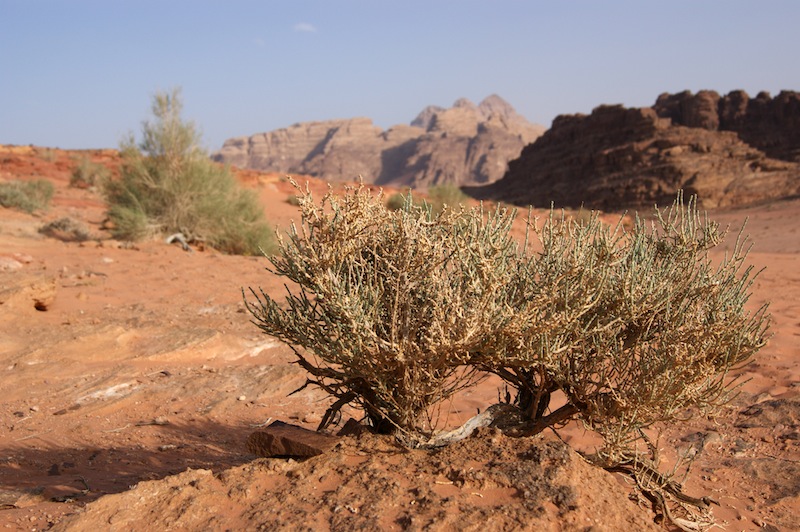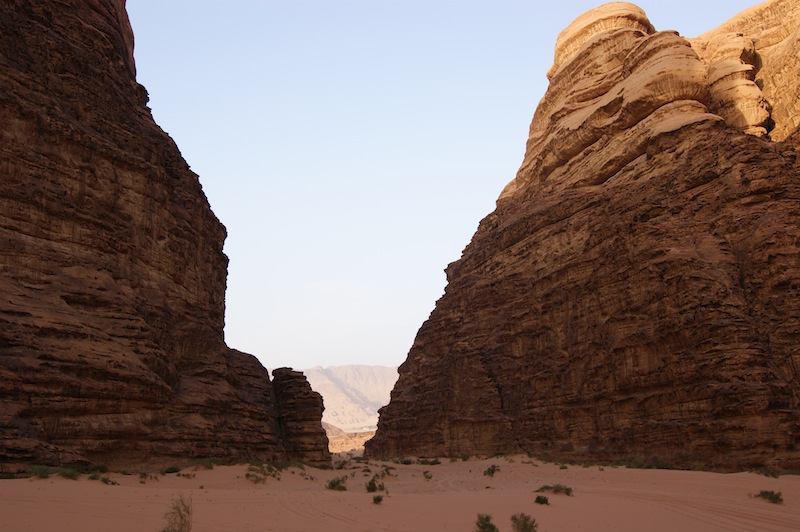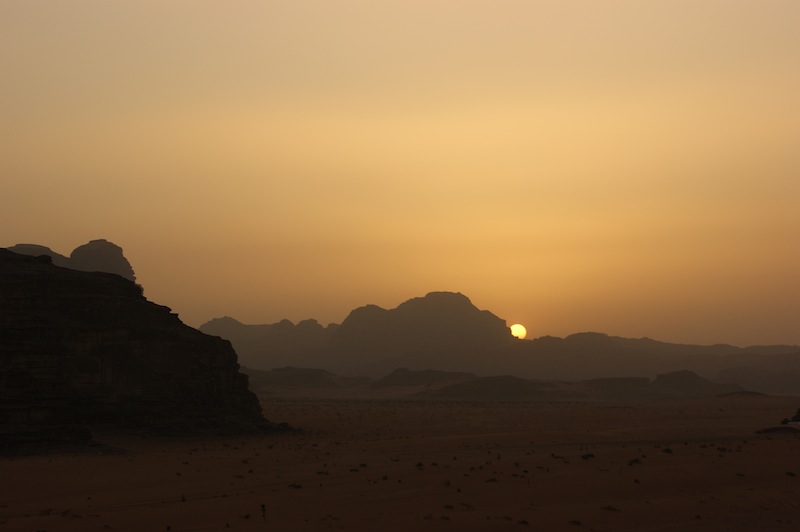There are some places on our delicate planet that live long in the memory. The desert of Wadi Rum in Jordan is one.
One early spring evening, perched on a rock high above the desert floor, we watched the sun go down on the horizon. We stood in awe as it slipped slowly behind the arid mountains, bathing us in a golden light in an all-too-brief, silent and romantic moment.
That sunset was just one highlight of our trip to Wadi Rum, a desert with a spellbinding sandstone and granite landscape that looks particularly amazing set against a backdrop of deep blue skies. It was once on the important trade routes from the east and home to the Arabic Nabateans, whose most famous settlement today is Petra. Our guides pointed out their rudimentary carvings, now several thousand years old, which can still be seen on some of the sun-baked rocks.
The nomadic Bedouin have lived in Wadi Rum for generations – and still proudly call it home – and Lawrence of Arabia hid out there during his long-running conflict with the Ottoman Turks in the early 20th century. The David Lean film that told his story was partly shot there and it’s a link the tourist authorities make much of, which comes as no surprise at all.
There’s an impressive welcome centre where a video explains how Wadi Rum came to be and how it’s provided a home to people for thousands of years. It looks out over the giant rock known today as The Seven Pillars of Wisdom, after the Lawrence book.
We explored the desert – a UNESCO World Heritage Site – on a day trip from our base in Aqaba, in a well-worn 4×4 controlled by a driver whose shtick was clearly to scare the shit out of his charges. Outside the visitor centre, the drivers (some of whom were barely into their teens) lined up ready to take their human cargo for a ride.
The drivers threw us around the landscape, up dunes and through giant rock formations. In the heat and blazing sunshine and freed from our carriages, we trudged up some of those dunes to take in the glorious views. On the well-worn tourist trail we ended up in Siq Um Tawaqi, a canyon with a Lawrence carving and stories that kept the guides busy. We stopped briefly at a little cafe and souvenir stall.
We stayed on to take in that breathtaking sunset and then headed to a touristy Bedouin evening, with music, dance and food served around a blazing fire. It was all very packaged and not at all spontaneous but enjoyable nevertheless. However, perhaps we should’ve done what so many had chosen to do and booked an overnight stay in the campsite.
Meanwhile, above us and with no light pollution to ruin things, the stars shone like beacons and the moon slowly drifted across the inky sky.




